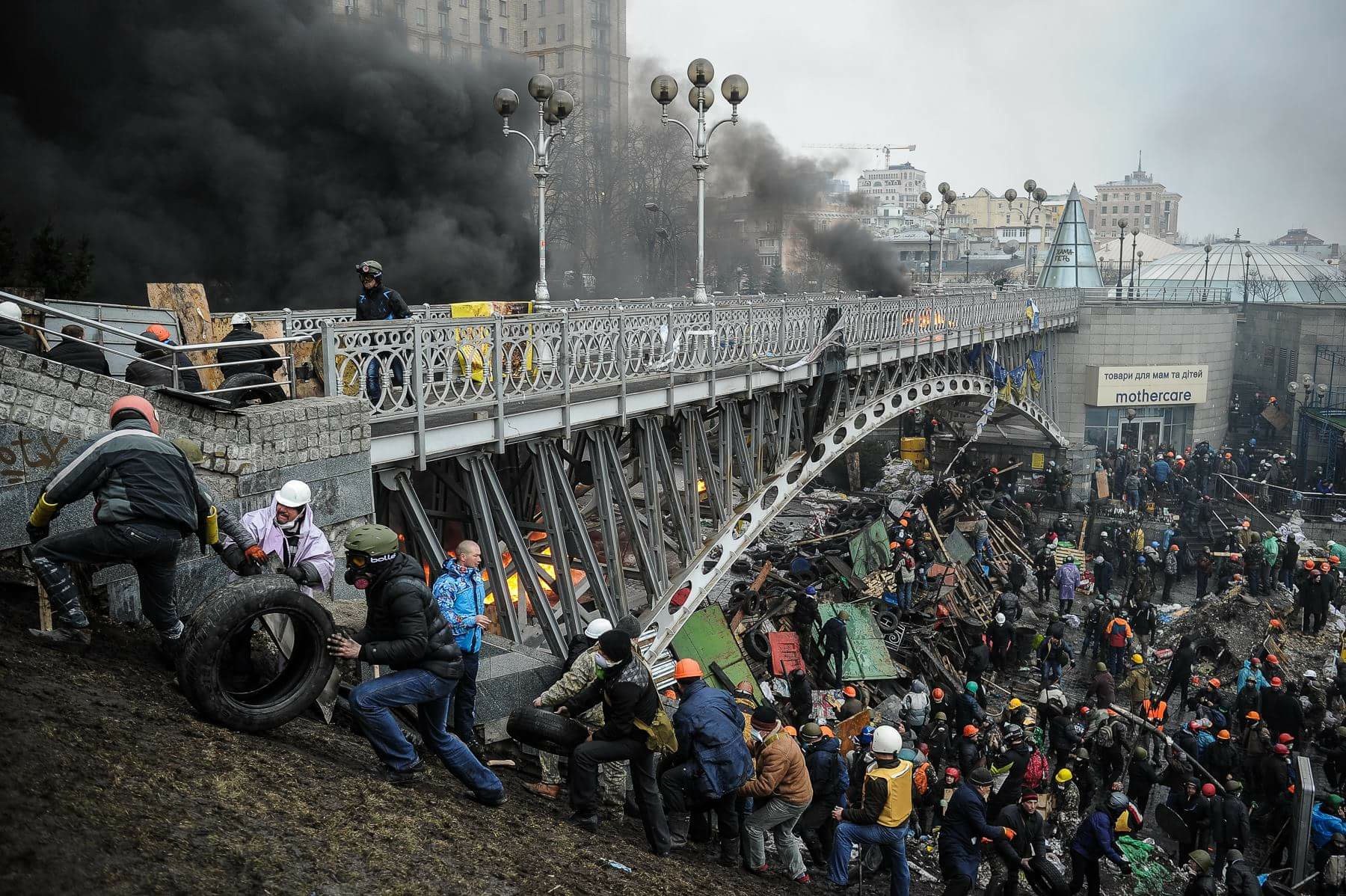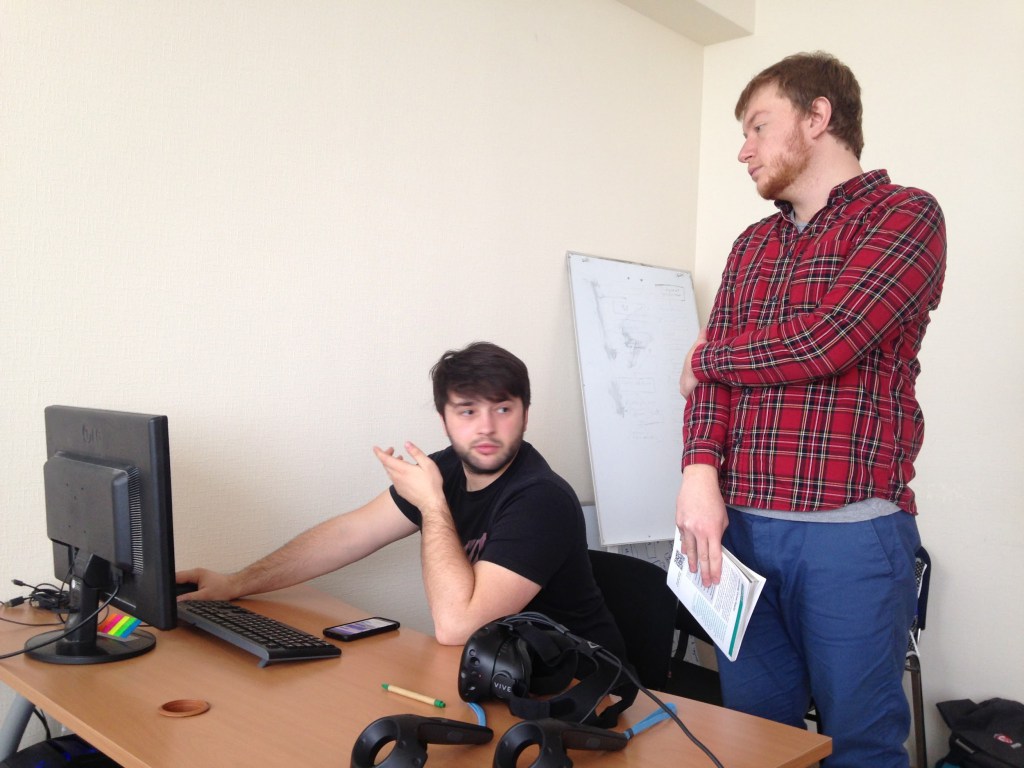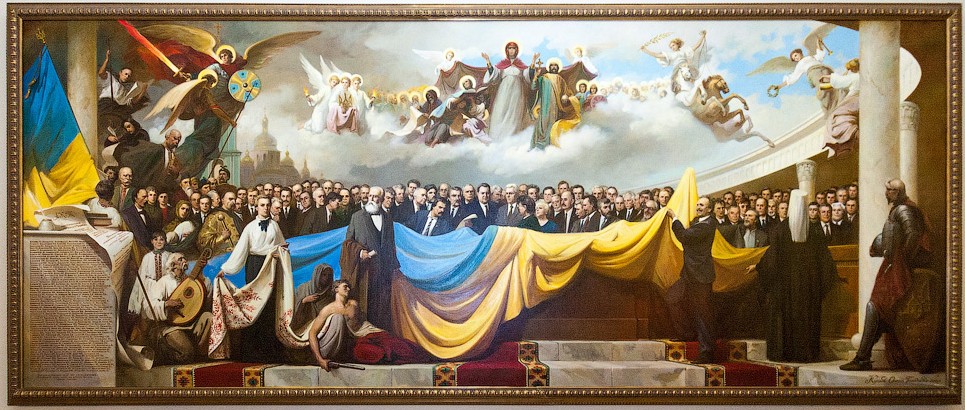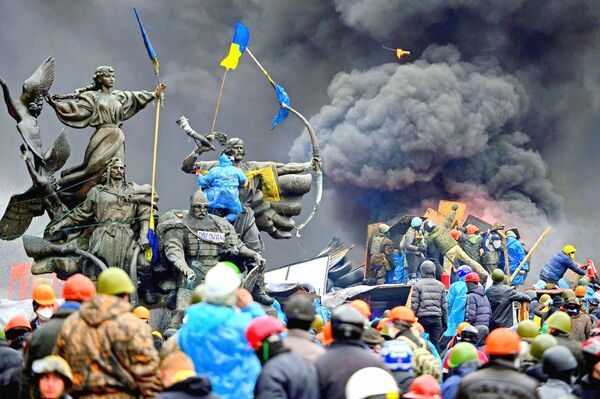While traditional journalists can be blamed of being biased and propaganda media can manipulate information to skew the reality of what has happened that day, the Virtual Reality project is called to show everything as it was.
The founders of the project are two friends and photographers – Oleksii Furman and Serhiy Polezhaka. They both were covering the events in Kyiv in 2014. Last year they started to work on recreating one of the bloodiest days of Ukraine’s modern history with the help of a team of technical specialists. For that, they received a $20,000 grant from the Google News Initiative, Knight Foundation, and Online News Association. After the photographers used the money from the grant, they continued at their own cost.
Now, two-thirds of the work has been completed and presented to the public in Kyiv. The work on the most tragic part – the episode near metro Khreschatyk where in a few minutes 19 protesters were killed is left unfinished. To complete it the team launched the Kickstarter campaign where they sick for an additional $10,000.
After the revolution ended, the photographers dreamt of making a story about Euromaidan using innovative methods. Finally, the idea of the project Aftermath VR:Euromaidan was born.
“I was fed up with unobjective coverage of the event, even if the misinterpretation was not on purpose,” Serhiy explains his desire to create a virtual reality project about Maidan.
He says that the simple desire of photographers to make good shots shapes the entire impression given by an event:
“The purpose of a photographer’s work is to catch the most telling moments from the whole event. For example, in January 2014 during the events on Vulytsia Hrushevskoho [when the first clashes with law enforcements and the protesters had taken place – Ed.] these telling moments where tires, Molotov cocktails, barricades on fire, a black man on the background of yellow fire. Also, it looked incredibly beautiful. So it resonated in the works of many photographers who used approximately the same technical characteristics. As a result, it seemed that the whole city was on fire. In fact, only 30 meters of one street were. This influenced further events. Ukraine’s international partners saw these pictures and had to react. And this influenced what was going on here and so on.”
The director adds that the way how photographers recorded the February killings allowed Russian propagandists to mix and match the shots to support their interpretation of events, creating a fake story based on real materials.
The authors say that their virtual reality project helps to see the real street at a real scale and the whole picture of what was going on.
How it looks like

A person puts on virtual reality glasses and turns up on the Heaven’s Hundred Lane – or, rather, its 3D model – as it appears now. For this, the team scanned the street using the photogrammetry technology. A person walks up the street and sees what was going on there that deadly morning. This is possible due to the archive photos, videos, and scanned artifacts — like helmets, shields, bullets and other fragments of that time.
“The idea is that you are always on the frontline. You repeat the path of the protesters,” explains Oleksii.
The photos will appear at the places where something had happened.
“In our work we combine a chronological statistical approach and the approach of a character-driven story,” explains Sergii.
During this virtual trip, a viewer finds artifacts, photos, and videos with explanations from that day. They are also connected to the timing of the events happening on February 20.
“Also, we made 360° video interviews with people who were at Instytutska on 20 February. And we found pictures of these people made by professional photographers on that day. For example, there is a guy who was injured and we have a photo where people provided medical help to him. We combine these stories into one,” Oleksii continues.
Emotional bomb

The project creators foresee several difficulties. Not all of them are technical.
“For me, that day is the hardest to remember. We all went through it – covering the events we were running under fire which could have killed us as well,” says Oleksii.
“The most shocking sight were the bodies of the killed and injured in the lobby of the hotel ‘Ukrayina‘,” Serhii recalls.
Oleksii adds – on that day, they did not fully understand what was going on:
“I returned several times, as the confrontation started on 18 February and continued to the 20th. I had no feeling that something terrible happened. We understood that the Berkut [the riot police tasked with pacifying the protesters – Ed] opened fire, but at 10 AM we couldn’t estimate the number of victims. I saw that the injured were taken away – some were in a better condition, some had it worse.”
For the project, the photographers had to return to the street where the deadly events had happened for over 100 times. Moreover, they had to look over the pictures and videos from that day a hundred times over:
“I have to say that the work on the project helped me to cope with this post-traumatic syndrome,” says Oleksii.
For Serhii, this approach is not helpful. He says that when he is on the street, he views it from a pragmatic point of view – to do the work for the project. However, it is different when he has to review the pictures from those days:
“I should do it alone during the nights. I still start crying when I see them.”
The project is unique not only for Ukraine. The photographers say that no one has ever recreated such a large area in virtual reality.
Read also:



